Alfa Romeo Giulia vs Hyundai Tucson – Which model is better for everyday use?
Two cars, one duel: Alfa Romeo Giulia meets Hyundai Tucson.
Which one wins in performance, efficiency and value for money? Find out now!
Costs and Efficiency:
Looking at overall running costs, both models reveal some interesting differences in everyday economy.
Hyundai Tucson has a decisively advantage in terms of price – it starts at 30600 £, while the Alfa Romeo Giulia costs 48000 £. That’s a price difference of around 17366 £.
Fuel consumption also shows a difference: Hyundai Tucson manages with 1 L and is therefore convincingly more efficient than the Alfa Romeo Giulia with 5.40 L. The difference is about 4.40 L per 100 km.
Engine and Performance:
Power, torque and acceleration say a lot about how a car feels on the road. This is where you see which model delivers more driving dynamics.
When it comes to engine power, the Hyundai Tucson has a to a small extent edge – offering 252 HP compared to 210 HP. That’s roughly 42 HP more horsepower.
In acceleration from 0 to 100 km/h, the Alfa Romeo Giulia is to a small extent quicker – completing the sprint in 6.80 s, while the Hyundai Tucson takes 7.90 s. That’s about 1.10 s faster.
In terms of top speed, the Alfa Romeo Giulia performs to a small extent better – reaching 235 km/h, while the Hyundai Tucson tops out at 194 km/h. The difference is around 41 km/h.
There’s also a difference in torque: Alfa Romeo Giulia pulls noticeable stronger with 470 Nm compared to 367 Nm. That’s about 103 Nm difference.
Space and Everyday Use:
Cabin size, boot volume and payload all play a role in everyday practicality. Here, comfort and flexibility make the difference.
Both vehicles offer seating for 5 people.
In curb weight, Hyundai Tucson is slight lighter – 1520 kg compared to 1640 kg. The difference is around 120 kg.
In terms of boot space, the Hyundai Tucson offers distinct more room – 620 L compared to 480 L. That’s a difference of about 140 L.
When it comes to payload, Hyundai Tucson slight takes the win – 545 kg compared to 535 kg. That’s a difference of about 10 kg.
Who wins the race?
The Hyundai Tucson proves to be leaves the rival little chance and therefore becomes our DriveDuel Champion!
Hyundai Tucson is the better all-rounder in this comparison.
 @ Hyundai Motor Company
@ Hyundai Motor Company
Hyundai Tucson
Alfa Romeo Giulia
The Alfa Romeo Giulia captivates with its stunning Italian design and dynamic performance, representing a perfect blend of elegance and sportiness. Its engaging driving experience, characterised by precise handling and responsive steering, appeals to enthusiasts who crave the thrill of the road. Inside, the Giulia showcases a beautifully crafted interior that combines luxury with cutting-edge technology, making every journey a delight.
details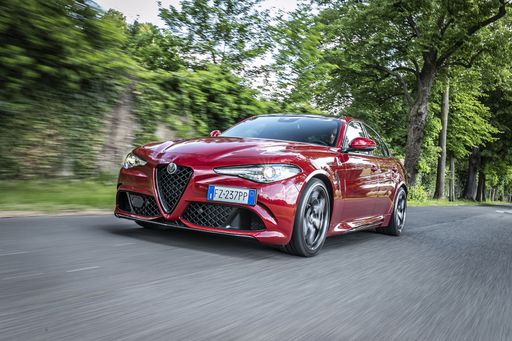 @ Alfa Romeo / Stellantis Media
@ Alfa Romeo / Stellantis Media
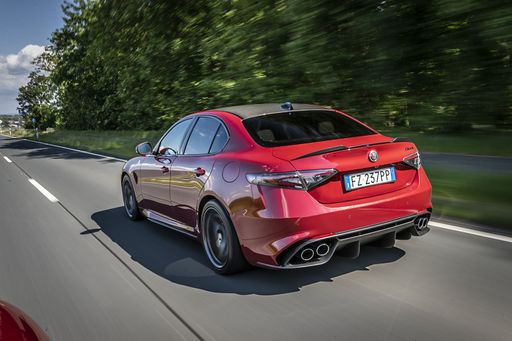 @ Alfa Romeo / Stellantis Media
@ Alfa Romeo / Stellantis Media
 @ Alfa Romeo / Stellantis Media
@ Alfa Romeo / Stellantis Media
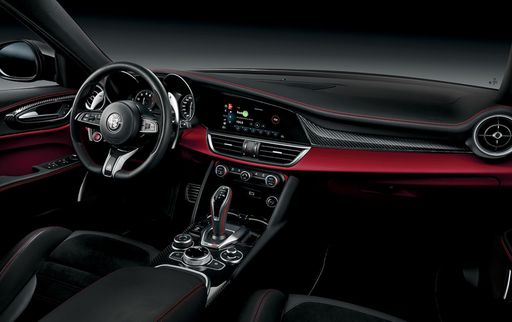 @ Alfa Romeo / Stellantis Media
@ Alfa Romeo / Stellantis Media
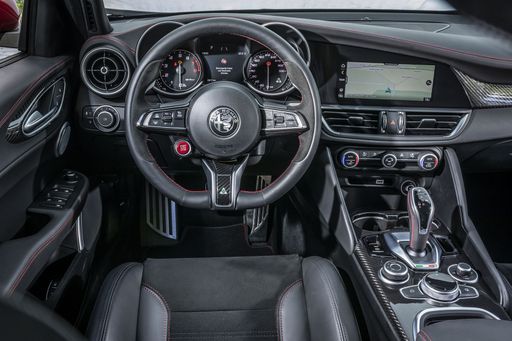 @ Alfa Romeo / Stellantis Media
@ Alfa Romeo / Stellantis Media
Hyundai Tucson
Hyundai Tucson marries bold, sculpted looks with a clever, roomy cabin that feels smarter than its price tag suggests. It's composed on the road, easy to live with day-to-day, and a sensible choice for buyers who want SUV style without the showroom theatrics.
details @ Hyundai Motor Company
@ Hyundai Motor Company
 @ Hyundai Motor Company
@ Hyundai Motor Company
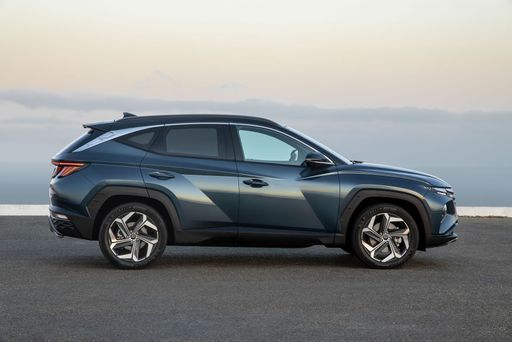 @ Hyundai Motor Company
@ Hyundai Motor Company
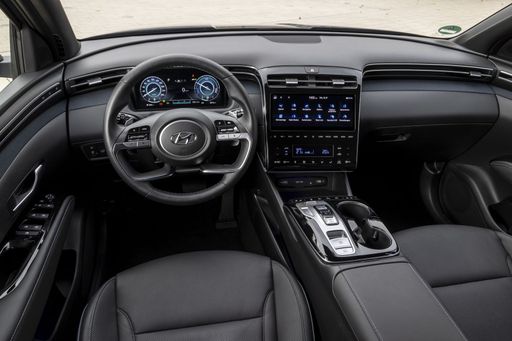 @ Hyundai Motor Company
@ Hyundai Motor Company
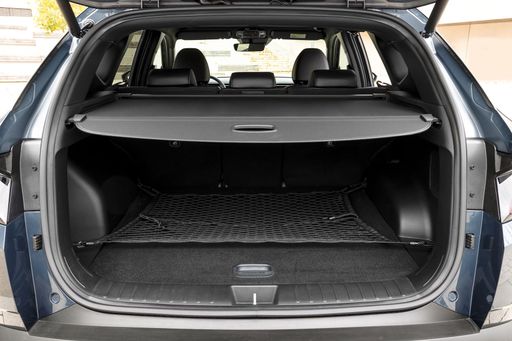 @ Hyundai Motor Company
@ Hyundai Motor Company
 @ Alfa Romeo / Stellantis Media
@ Alfa Romeo / Stellantis Media
|
 @ Hyundai Motor Company
@ Hyundai Motor Company
|
|
|
|
Costs and Consumption |
|
|---|---|
|
Price
48000 - 57000 £
|
Price
30600 - 46300 £
|
|
Consumption L/100km
5.40 L
|
Consumption L/100km
1 - 6.9 L
|
|
Consumption kWh/100km
-
|
Consumption kWh/100km
-
|
|
Electric Range
-
|
Electric Range
64 - 70 km
|
|
Battery Capacity
-
|
Battery Capacity
-
|
|
co2
141 g/km
|
co2
22 - 156 g/km
|
|
Fuel tank capacity
58 L
|
Fuel tank capacity
42 - 54 L
|
Dimensions and Body |
|
|---|---|
|
Body Type
Sedan
|
Body Type
SUV
|
|
Seats
5
|
Seats
5
|
|
Doors
4
|
Doors
5
|
|
Curb weight
1640 kg
|
Curb weight
1520 - 1889 kg
|
|
Trunk capacity
480 L
|
Trunk capacity
546 - 620 L
|
|
Length
4650 mm
|
Length
4510 - 4520 mm
|
|
Width
1860 mm
|
Width
1865 mm
|
|
Height
1438 mm
|
Height
1650 mm
|
|
Max trunk capacity
-
|
Max trunk capacity
1721 - 1799 L
|
|
Payload
535 kg
|
Payload
525 - 545 kg
|
Engine and Performance |
|
|---|---|
|
Engine Type
Diesel
|
Engine Type
Diesel MHEV, Petrol MHEV, Petrol, Full Hybrid, Plugin Hybrid
|
|
Transmission
Automatic
|
Transmission
Automatic, Manuel
|
|
Transmission Detail
Automatic Gearbox
|
Transmission Detail
Dual-Clutch Automatic, Manual Gearbox, Automatic Gearbox
|
|
Drive Type
All-Wheel Drive
|
Drive Type
Front-Wheel Drive, All-Wheel Drive
|
|
Power HP
210 HP
|
Power HP
136 - 252 HP
|
|
Acceleration 0-100km/h
6.80 s
|
Acceleration 0-100km/h
7.9 - 11.6 s
|
|
Max Speed
235 km/h
|
Max Speed
180 - 194 km/h
|
|
Torque
470 Nm
|
Torque
265 - 367 Nm
|
|
Number of Cylinders
4
|
Number of Cylinders
4
|
|
Power kW
154 kW
|
Power kW
100 - 185 kW
|
|
Engine capacity
2143 cm3
|
Engine capacity
1598 cm3
|
General |
|
|---|---|
|
Model Year
2024 - 2025
|
Model Year
2024
|
|
CO2 Efficiency Class
E
|
CO2 Efficiency Class
E, F, D, B
|
|
Brand
Alfa Romeo
|
Brand
Hyundai
|
Is the Alfa Romeo Giulia offered with different drivetrains?
Available configurations include All-Wheel Drive.
The prices and data displayed are estimates based on German list prices and may vary by country. This information is not legally binding.
